Shiraz is one of the biggest cities in Iran and most significant city at the center of Fars province at the height of 1486 m above the sea level, located in the Zagros mountainous area, a highly important protection for the strategic location of Shiraz. Shiraz consists of 3 districts, ”Arzhan“, “Zaraghan“ , ”Markazi“, six cities and 12 rural districts. Shiraz name has been explored in the Achaemenid inscriptions in Persepolis.
This city has been known as the most significant tourism center, the 6th populous city, the cultural capital of the country, 2nd literary city in the world, the 3rd religious city, the 3rd holy shrine of Iran and the city of poetry, wine and flower. The tombs of several poets such as Hafez and Sa’adi placed in Shiraz where embraces a major part of Iran’s ancient history, historical, cultural, religious and natural attractions.
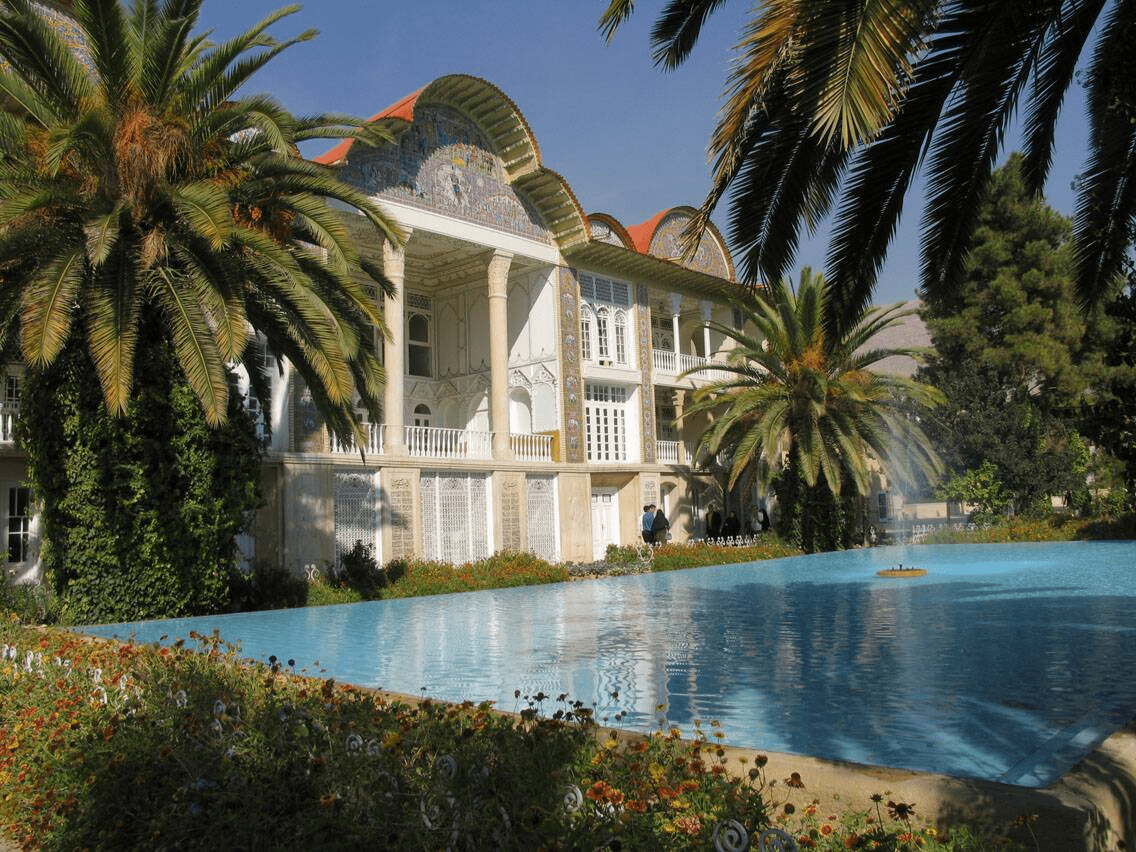
The Persian Gardens
Diversity of designs and exclusive architectural styles in Persian gardens symbolizes the image of Eden with four Zoroastrian elements of sky, earth, water and plants. Persian garden with three certain features and an exclusive design is globally well-known as outstanding example of Persian culture:
- located along the water stream
- surrounded by high walls
- contained a summer edifice and a pool of water.
Nine Persian garden registered in UNESCO include: Pasargade garden in Shiraz as the mother of Persian gardens, built in 6th century BC, and related to Cyrus the great; Eram garden of Shiraz , built in Seljuk era with a Qajar edifice; Chehel Sotun garden of Isfahan, The royal garden, Safavid period; Fin garden of Kashan, Safavid era; Mahan garden of Kerman, late Qajar era; Akbarieh garden of Birjand , late Zandieh and early Qajar era; Dolat Abad garden of Yazd, late Afsharid dynasty; Pahlevan pour garden of Mehriz, late Qajar dynasty; Abbas Abad garden, Safavid era.
Naqsh-e Rostam
“Naqsh-e Rostam is a great treasure in the heart of the mountains of the historical region of Marvdasht, an area with magnificent and eye-catching mountains that display ancient glory. In fact, this site, which contains monuments from the Elam Civilization, Achaemenid Empire, and Sasanian Empire, is prominent thanks to the tombs of the four Achaemenid kings. It is stated that due to the similarity of the Sassanid decoration to what Rostam (the hero of Shahname) has been described in Shahnameh, this region has become known as the Naqsh-e Rostam (Rostam Relief) which has no figure of Rostam though.
This site is full of monuments from different historical periods of Iran, the oldest one is a rock relief from the Elamite dynasty, which depicts two goddesses, a king and a queen on the throne of Marneshan. However, by the order of Bahram II, the Sassanid king, some parts of it have been erased and a figure of this Sassanid king and his courtiers have replaced the Elamite design.
Another of the most prominent works of this breathtaking site, which shines bright like a diamond, is the mysterious and magic Kabe-ye Zatosht (Cube of Zoroaster) in the vast plain of Fars province. A cubic construction with stairs in front made of white limestone and a height of 12 meters. The exact use of this building is not known, but the fire temple is one of the possible uses. However, some believe that this building was a tomb and others say that it was used as an archive of keeping sacred books and documents.

Persepolis
Takht-e Jamshid (Persepolis, Parse, Parse Polis), is a huge complex including palaces, gates, kings mausoleums, reliefs, and glorious stairways constructed on the west hillside of Rahmat mountain; it was started to establish in 518 BC and completed after 150 years.
Being developed during the dynasty of Darius I, Xerxes and Artaxerxes I, this ancient city was considered a majestic and ceremonial capital for Achaemenian, which had been constructed on a stone terrace higher than the Marvdasht flatlands.
Achaemenid architecture, best-known as the art of integration and innovation, is one of the most artistic and architectural masterpieces of the ancient world. The palaces of this complex are consisted of several important parts such as: entrance stairs, gate of all nations, Āpādānā palace (Royal Bār-e-ām palace), Tachar (exclusive palace of King), Hadish palace, Hall of Tripylon (Triple Gate), Palace of the Hundred Columns, incomplete gateway, and mausoleums in the eastern part.
Based on various evidences, certain usages are considered for Persepolis such as temporary residence and resting place, a place to hold the rituals and spring ceremonies, an observatory for astronomical studies, the Council and Parliament place, a great worship place for performing rituals and also a Ziggurat inspired by the architecture of Mesopotamian Ziggurats.
Nasir al-Mulk Mosque
Nasir al-Mulk Mosque (Persian: مسجد نصیر الملک, Masjed-e Nasir ol-Molk) is a construction with a marvelous architecture in the city of Shiraz in Fars province, which takes every viewer’ breath away with its play of light. Nasir al-Mulk Mosque is one of the architectural buildings of the Qajar period (1789-1925). It was built by the order of Mirza Hassan Ali Khan Nasir al-Mulk, the son of the rulers of Persia in the Qajar period. The area of Nasir al-Mulk Mosque is 2980 square meters. Nasir al-Mulk Mosque amazes visitors from the moment they enter with its dazzling tiling. The entrance porch of this mosque is full of seven-color Qajar tiles in blue, yellow, pink, azure, and white.
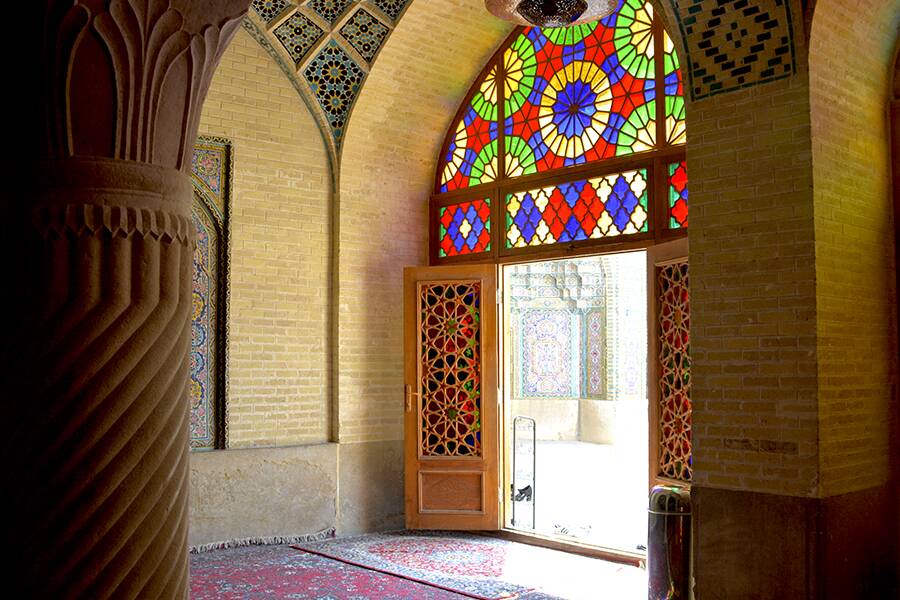
The glorious door of the facade has been made of wood. Above it, there is an inscription on the pieces of marble stone of a poem. Nasir al-Mulk Mosque enjoys two Shabestans (underground space that can be usually found in the traditional architecture of mosques), on the west and east side. In fact, the methods used in the decoration of the western Shabestan is the main reason for the population and reputation of this stunning attraction. The inner part consists of a series of arches and vaults as well as two rows of six columns which divide the interior of the western Shabestan into smaller sections. This Shabestan is connected to the beautiful courtyard of the mosque by seven wooden gates. All of these doors are decorated with the art of Gereh Chini (Trelliswork) and pieces of colored glass.
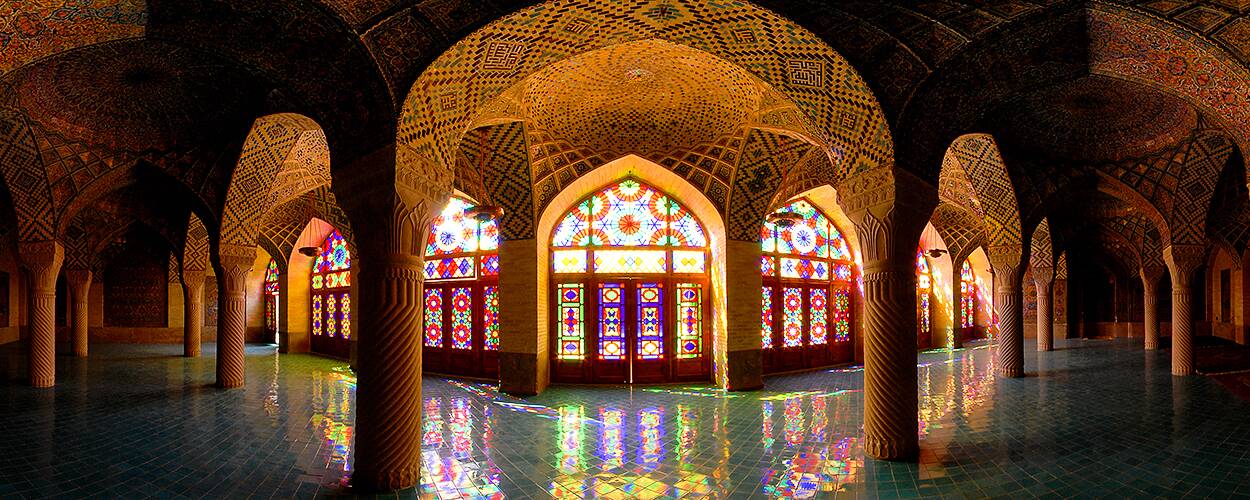
Vakil Historic Bath
Being the most famous historic bath in Shiraz, Vakil Bath is among the buildings constructed in 1187 A.H. at Karim Khan Zand’s command, in the district of Shah square, next to Vakil Mosque and Bazar, with 8660m2 built up area, 120meters length and 80meters width.
This large bath has enjoyed the most advanced architectural principles of Zandieh Period. One of the most interesting sections in this bath is the alcove. Other sections include dressing room, hothouse and Khazineh. Sarbineh is an octagonal structure in which eight colored columns hold the dome ceiling of the building. The picturesque illustrations containing the image of Hazrat Ali and his famous sword, Zolfaghar, the stories of Shirin and Farhad, Bijan and Manijeh have been depicted, in stucco method, below the ceiling which attract the visitor’s attention.
 Hafezieh
Hafezieh
Hafezieh, the unique mausoleum of the eighth century Iranian sonneteer, Hafez Shirazi, is one of the most popular tourist attractions among Iran and Fars province celebrities. At first, Shams al-Din Mohammad Yaghmaei, minister of Abul Qasem Gurkani (Fars ruler), built a dome over Hafez grave and a large pool in front of it that was filled by Rokn Abad water in 865 AH (1452 AD). The building was repaired and some parts were added to it in later periods.
This monument dating back to the Mozaffarid period was built commissioned by Reza Pahlavi and Ali Asghar Hekmat with Andre Godard design, the famous French architect, in which four stone pillars is related to Zand period. They also added 16 columns, a large veranda with 22 columns with the length of 56 meters and painted decorations, plaster and tile work in 1316. This building has been constituted from two North and South courtyards separated from the hall. Also, there are beautiful garden and orangery and rectangular pools in the courtyard of the mausoleum.

Eram Garden
As one travels to Shiraz during the spring, where the air is permeated with the scent of orange blossoms, they can look more closely into the source of inspiration for a lot of great Iranian poets who inhabited the region, the likes of Hafez and Saadi. Although it’s quite hot and the weather condition is utterly extreme in the area, Shiraz is replete with marvelous gardens, beautifully designed through centuries, Jahan-nama, Delgosha, Afif-abad and Eram gardens are just a few to mention.
Bagh-e-Eram, literally translates to Paradise Garden, is one of the nine UNESCO inscribed cultural heritage sites as Iran’s Persian Gardens. Due to the torrid climate conditions in Iran, these Gardens are the result of an inspired intelligence which has been able to make the most of different fields of knowledge, including water management, engineering, architecture, botany and agriculture. All the more, the idea of the Persian Gardens, as an earthly paradise, colors the Iranian common and artistic expressions within various fields, such as literature, music, poetry, calligraphy and carpet design, which in turn, have aesthetically inspired the arrangement of the Gardens.

Jahan Nama Garden
Almost the first garden that Shiraz welcomes you with is the Jahan Nama Garden [Bagh-e Jahan Nama]). Jahan Nama Garden is one of the gardens that was built during the Khan Zand period. The garden was fenced and a mansion built in it in the Zandieh dynasty (in the twelfth century AH) and under the order of Karim Khan Zand. Of course, some sources say that Jahan Nama Garden belongs to the seventh century AH and was founded in the Safavid period. After that, it rebuilt and improved during the Karim Khan period. This garden was renovated in 2004 and was inaugurated by the president of that time.
Jahan Nama Garden is built on the slopes of a mountain, and the view covers the whole of Shiraz. Maybe that’s why it’s called a worldview because the garden overlooks the entire city. This garden is surrounded by a brick wall, and there is a Kolah Farangi (pergola) with four ponds at its center. One of the characteristics of Iranian gardens is the mansion in them. It is the residence of kings and a place to host governmental quests. The Kolah Farangi is octagonal and has four royal rooms. The royal rooms are in the four corners of the building that two-floor rooms have been built between each one. The garden covers about five hectares, and its natural and architectural beauties amaze you; it seems that a carpet of flowers is spread under your feet in this garden. In the middle of the garden, there is a marble-made pool filled with water from the Roknabad.
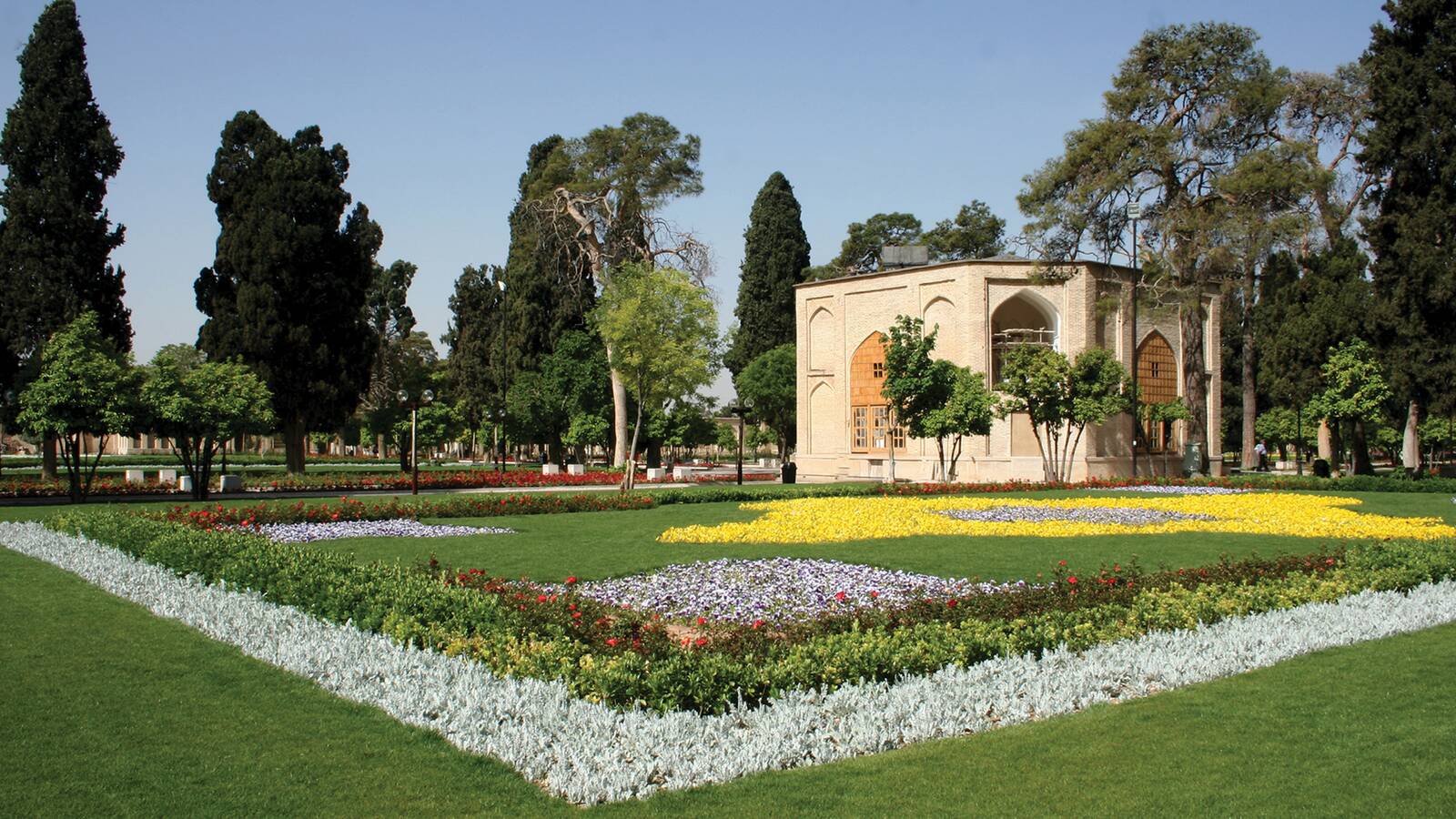
Narenjestan Qavam
If you have this plan to visit Shiraz city (in Fars province) in the spring, be certain to include visiting of Narenjestan Qavam Garden Complex in your itinerary; Due to this fact that Shiraz always reminds us the aroma of orange blossom from its eye-catching gardens, especially in the spring.
Both the garden and mansion of Narenjestan Qavam belonged to the Qavam family, one of the influential families in the Qajar era. The family was also responsible for the construction and renovation of some buildings in Shiraz city, which these days, they all have become tourist attractions.



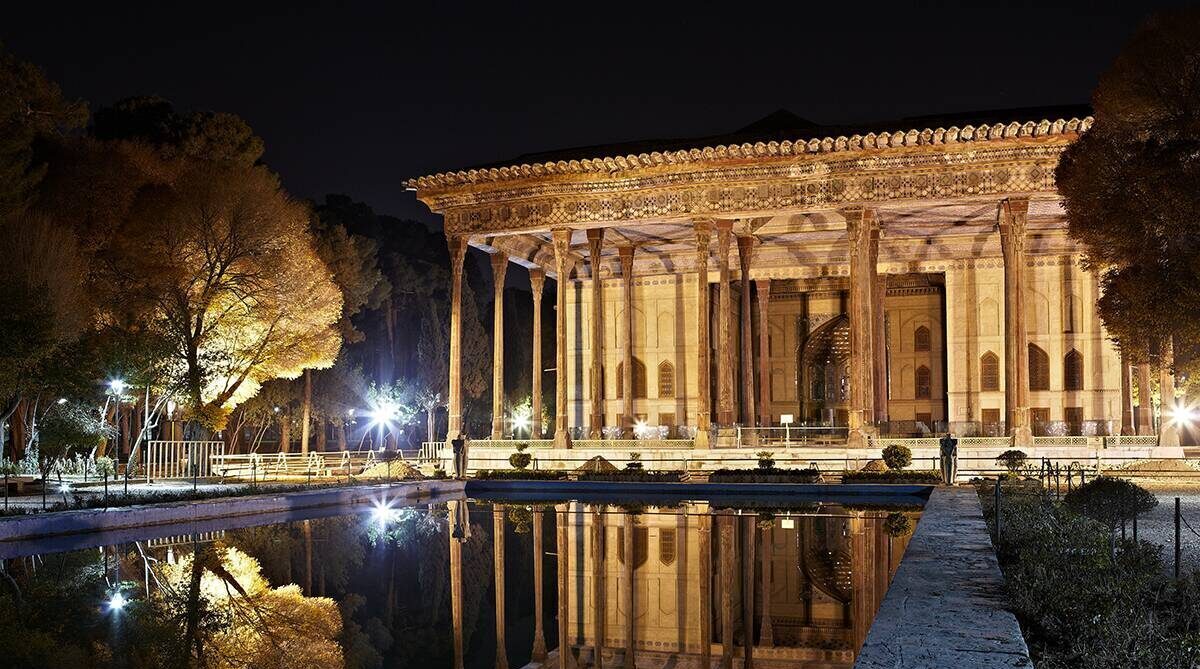
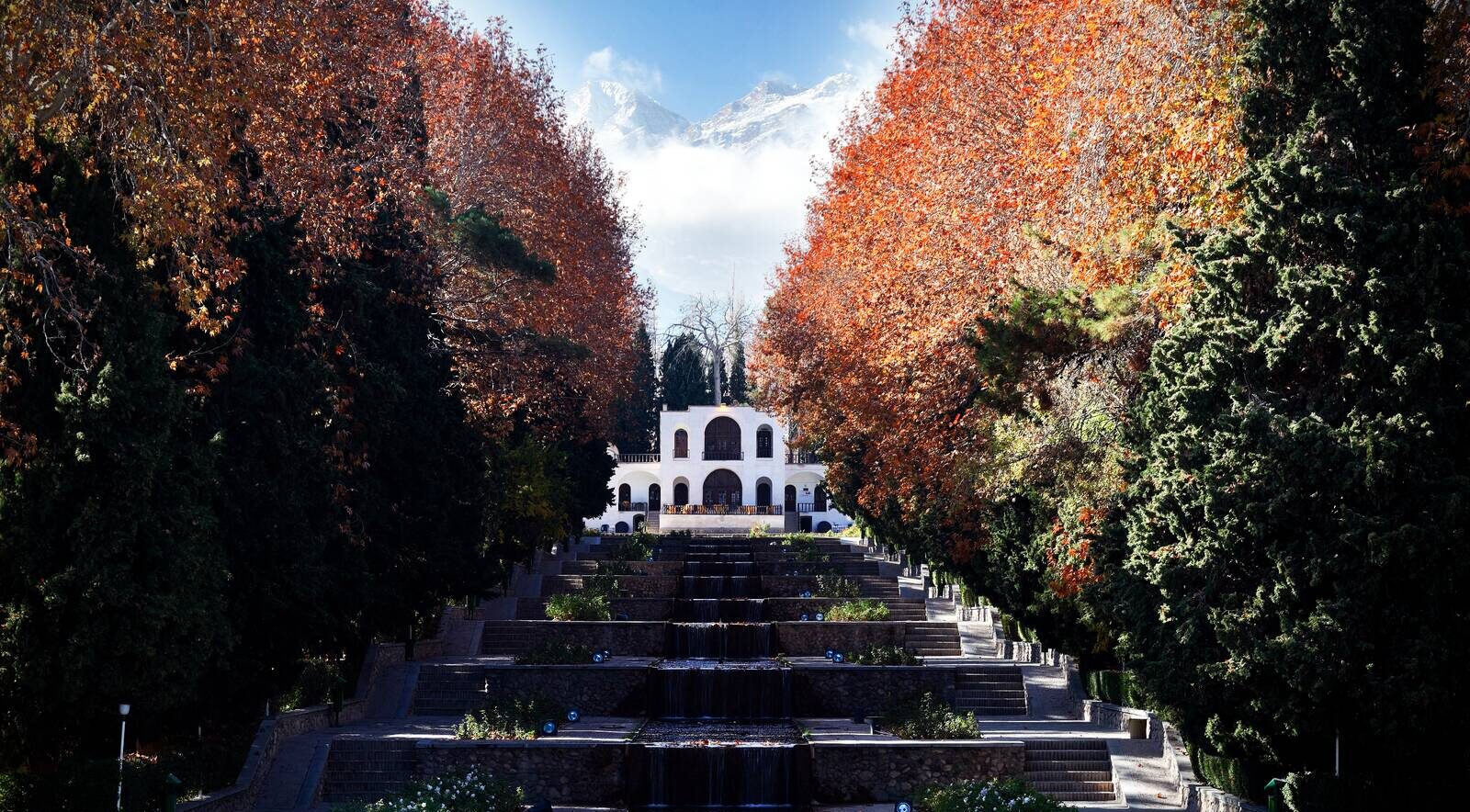
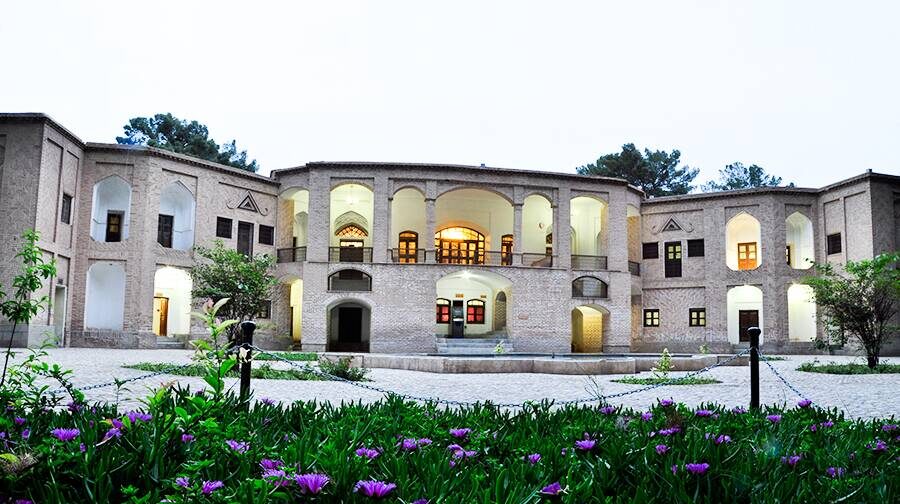
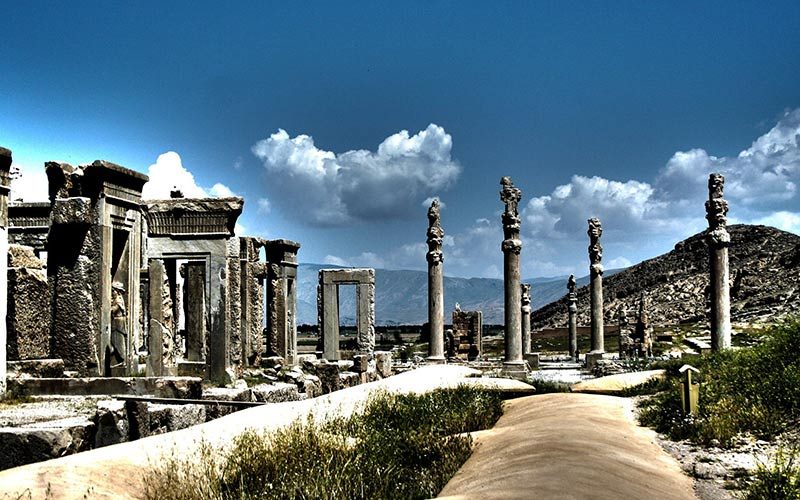
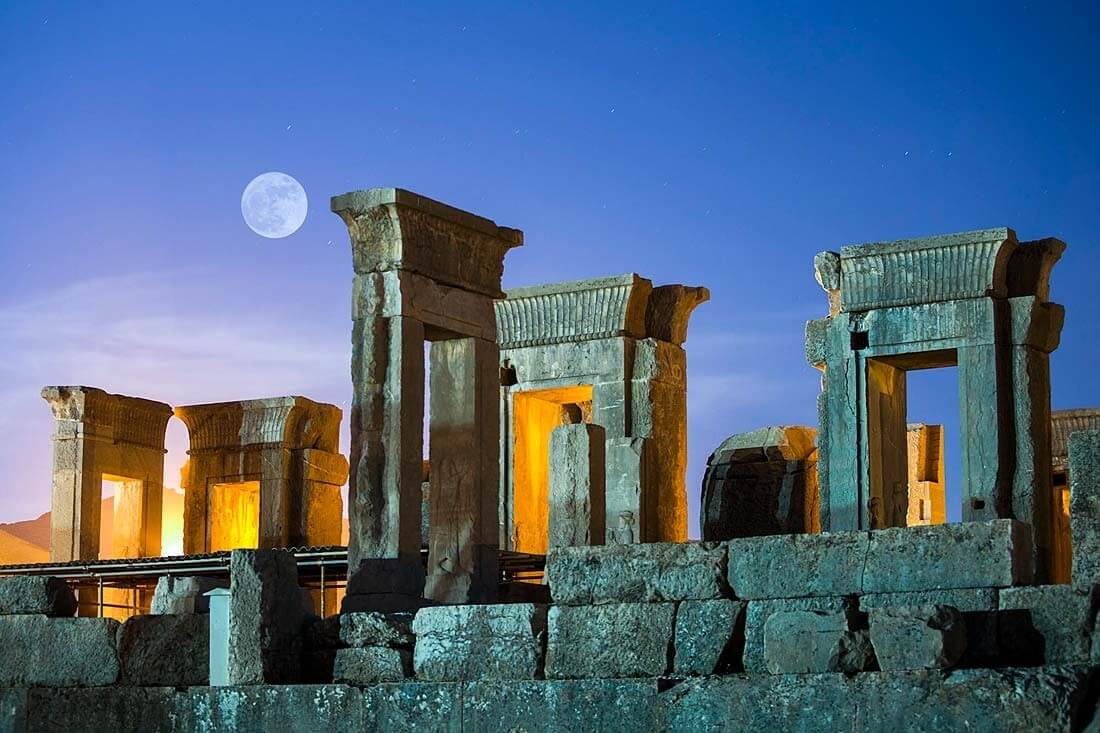
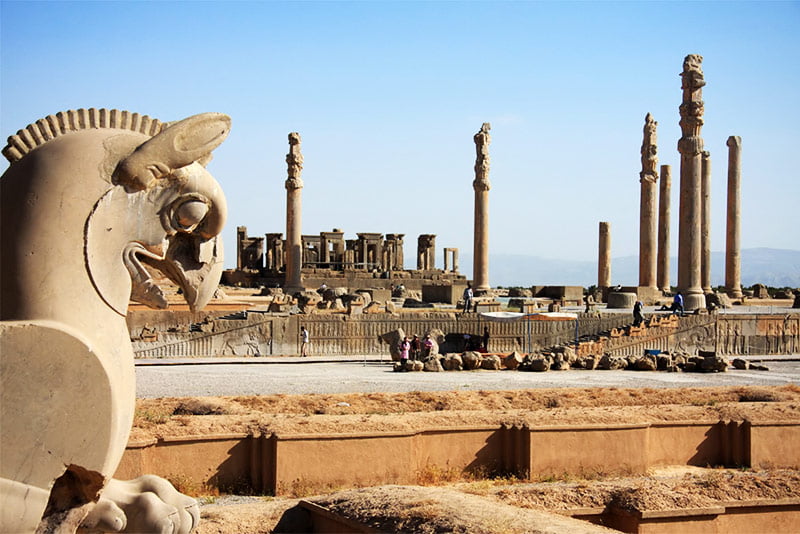
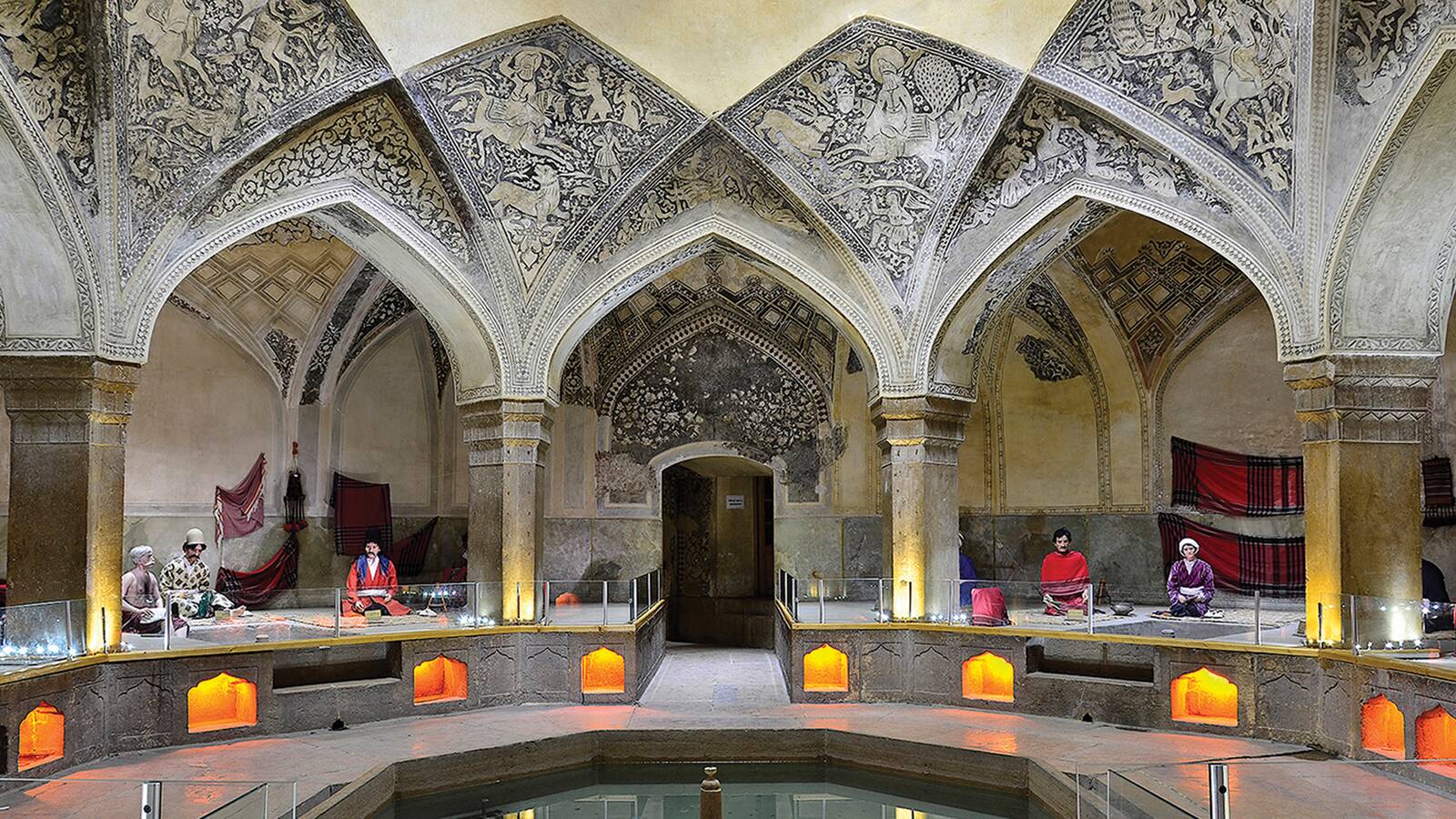 Hafezieh
Hafezieh